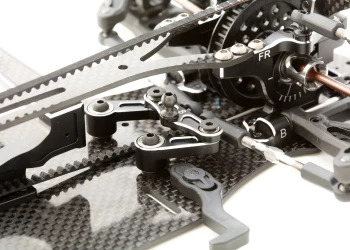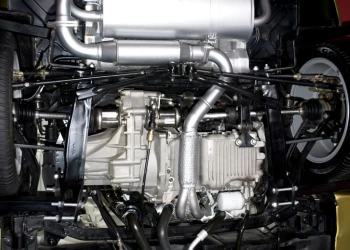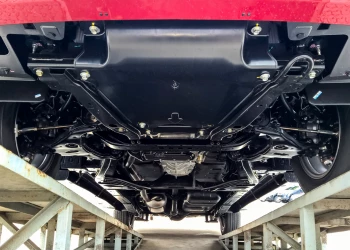Innovative Strategies for Blending in EVs Regenerative Braking Systems
Add bookmarkElectrification and emission strategies are driving technological innovation in the braking sector and regenerative brakes are seen as an integral part of the future as we move towards autonomous vehicles.
However, braking is traditionally one area of auto-manufacturing which has a slow development cycle, and there is a significant case for blending of regenerative brakes and conventional friction brakes as a step on the path to fully electronic, regenerative braking systems.
According to a BIS Automotive market intelligence report, “‘Global Automotive Regenerative Braking System Market- Analysis and Forecast (2017-2026)”, the market value of regenerative braking systems is set to reach $24.52 billion by 2026, with growth over the period 2017-2021 projected at an incredible rate of 36.47% CAGR. Such estimates demonstrate that, despite the technological challenges, regenerative braking will be a significant market in the coming years.
Development of Braking Systems for Electric and Autonomous Cars
The trends in electrification and automation spurred the Society of Automotive Engineers to update their Main Brake System Requirements to be followed by OEMs and tier 1 suppliers. The requirements include:
- Priority 1: vehicle deceleration: in any failure mode a appropriate deceleration must be achieved. Basic rule: the higher the autonomous vehicle maneuver speed, the higher the deceleration in degraded mode needs to be.
- Priority 2: vehicle stability: during braking maneuver in any first failure mode the locking of rear wheels must be avoided.
- Priority 3: vehicle steerability: during braking maneuver in any first failure mode the locking of the front wheels must be avoided.
- Priority 4: secure standstill: the vehicle that has been brought to standstill needs to be secured in the standstill in any first failure mode independent for infinite time interval (typically solved with independent actuator Park Brake / Gear lock).
With this in mind, along with the requirements for safety standards, reduced emissions and cost-efficiency, a variety of innovative new technologies are coming to the fore which provide an insight into the future of braking.
Chevrolet Bolt Regen on Demand
The 2017 Chevrolet Bolt saw the introduction of one-pedal driving and a ‘Regen on Demand’ paddle attached to the steering wheel to further reduce demand on the conventional friction brakes. According to GM, progressively stronger levels of regenerative braking are available through a series of four driver-selectable modes:
- Operating in Drive and easing off the accelerator.
- Operating in Drive and using the Regen on Demand paddle on the back of the steering wheel.
- Operating in Low and easing off the accelerator.
- Operating in Low and using the Regen on Demand paddle in tandem.
In the first instance, simply lifting the foot off the accelerator engages regen braking as the car decelerates but the brake pedal will still be required to bring the car to a stop. Modes 2-4 are stronger one-pedal modes that in certain situations will enable the driver to bring the vehicle to a stop without using the brake pedal. When pulled, the Regen on Demand paddle on the steering wheel applies the maximum amount of regenerative braking force available. In many instances, this can replace the need to use the brake pedal in all but emergency situations.
In Drive mode, the Regen on Demand paddle provides up to 65 kW of regenerative braking power, while in Low mode, it will provide up to 70 kW. The impact of the system and the reduction in brake usage and subsequent wear on brake pads and rotors, resulted in GM installing rust-resistant brake rotors.
Nissan Leaf E-Pedal
In a similar advance, Nissan introduced e-Pedal technology in the latest Leaf model, which allows the driver to start, accelerate, decelerate and stop using only the accelerator pedal. The act of lifting the foot off the pedal engages the regenerative braking system and slows the vehicle, while in stop-and-go city driving, the e-Pedal reduces the need to shift from one pedal to the other and makes driving more comfortable.
According to Nissan, 90% of driving needs can be covered by the e-Pedal, without the need to engage the hydraulic brake system. Easing off the accelerator creates a deceleration force to a maximum of 0.2G - comparable to stepping on the brake pedal. Precise electronic motor management enables the e-pedal system to deliver smooth automated deceleration when traveling downhill. When stopping, the hydraulic brake system is automatically activated to keep the car stationary, and similar to conventional vehicles, the brake lamps light up when decelerating or stopping. The hydraulic brakes are also applied simultaneously on low-traction surfaces, using all four wheels to safely slow the vehicle.
ZF Integrated Brake Control
ZF’s Integrated Brake Control (IBC) technology, coming to the market in 2018, is a demonstration of brake blending technology that offers independent electronic boost for powertrain systems that provide more efficient regenerative braking.
The system supports both conventional braking features and semi-automated driving functions. According to ZF, IBC effectively replaces the electronic stability control (ESC) system and vacuum boosting system formally used to exploit the negative pressure in the engine’s air intake system to boost braking power. In the IBC system, a high-precision actuator is driven by an extremely fast electric motor - and the motor is what enables IBC’s braking performance and ESC functionality. The motor is designed to generate high brake pressure in less than 150 milliseconds, thus helping to reduce stopping distances - a prerequisite of the new, stringent test protocols of the European New Car Assessment Program (EURO NCAP).
This technology is an alternative to a system that uses electric brake boosters combined with a standard ESC to maintain a more traditional braking architecture. Using an electronic brake system with a vacuum independent method for delivering the brake boost can provide increased deceleration and potentially meet increasingly stringent regulatory requirements for functions such as automatic emergency braking.
Hyundai Mobis iMEB Electronic Brake
In February 2018, Hyundai Mobis announced that it is ready to begin mass-production of its new braking system, Integrated Mobis Electronic Brake (iMEB).
According to Hyundai Mobis, iMEB is the most advanced regenerative brake system. The company first developed a hydraulic fill brake pressure supply unit in the form of an electronic motor-based system. It then integrated the brake pressure supply unit and the brake control unit - consisting of over 30 control functions including ESC - into a single system. The brake control unit features ADAS functionality, Front Collision Avoidance (FCA), Advanced Smart Cruise Control (ASCC), and Electronic Parking Brake (EPB).
The iMEB system creates a 13% increase in brake responsiveness and a 5% reduction in weight. This enables a 30% cost saving in comparison to separate hydraulic fill systems.
Bosch Redundant Braking System
Bosch is a key supplier of regenerative braking systems to the automotive market, and the company has developed a solution to provide the redundancy needed for future autonomous vehicles.
Bosch’s solution for a fail-degraded brake system (steering system and E/E architecture) is the combination of its electromechanical brake booster iBooster and ESC (Electronic Stability Control) systems. Both are independently capable of performing braking functions for the vehicle in the rare case of a single failure. This breakthrough was achieved by modifying one system element - the vacuum brake booster is replaced by an intelligent electro-mechanical booster, the iBooster. Where conventional brake systems are comprised of two actuators, a vacuum brake booster and ESC unit, the redundant brake system consists of two actuators that are each able to decelerate the vehicle independent of the driver applying the brake pedal. If a failure occurs in the brake system, either actuator is able to avoid wheel lock up by modulating the brake pressure, which maintains the ability to steer during deceleration.
Summary
While brake-by-wire technology is considered by some to be a prerequisite to autonomous driving, it will be some years before the automotive industry is able to dispense with conventional brakes altogether. However, the requirements for reduced emissions, the trend towards electrification and increasingly stringent regulations for brakes, are all pushing development in the sector.
Sources:
https://www.nissan-global.com/EN/TECHNOLOGY/OVERVIEW/e_Pedal.html
https://www.just-auto.com/interview/zf-vp-on-tomorrows-electronic-braking-systems_id183938.aspx
https://www.bosch.co.jp/en/press/group-1306-13.asp






















